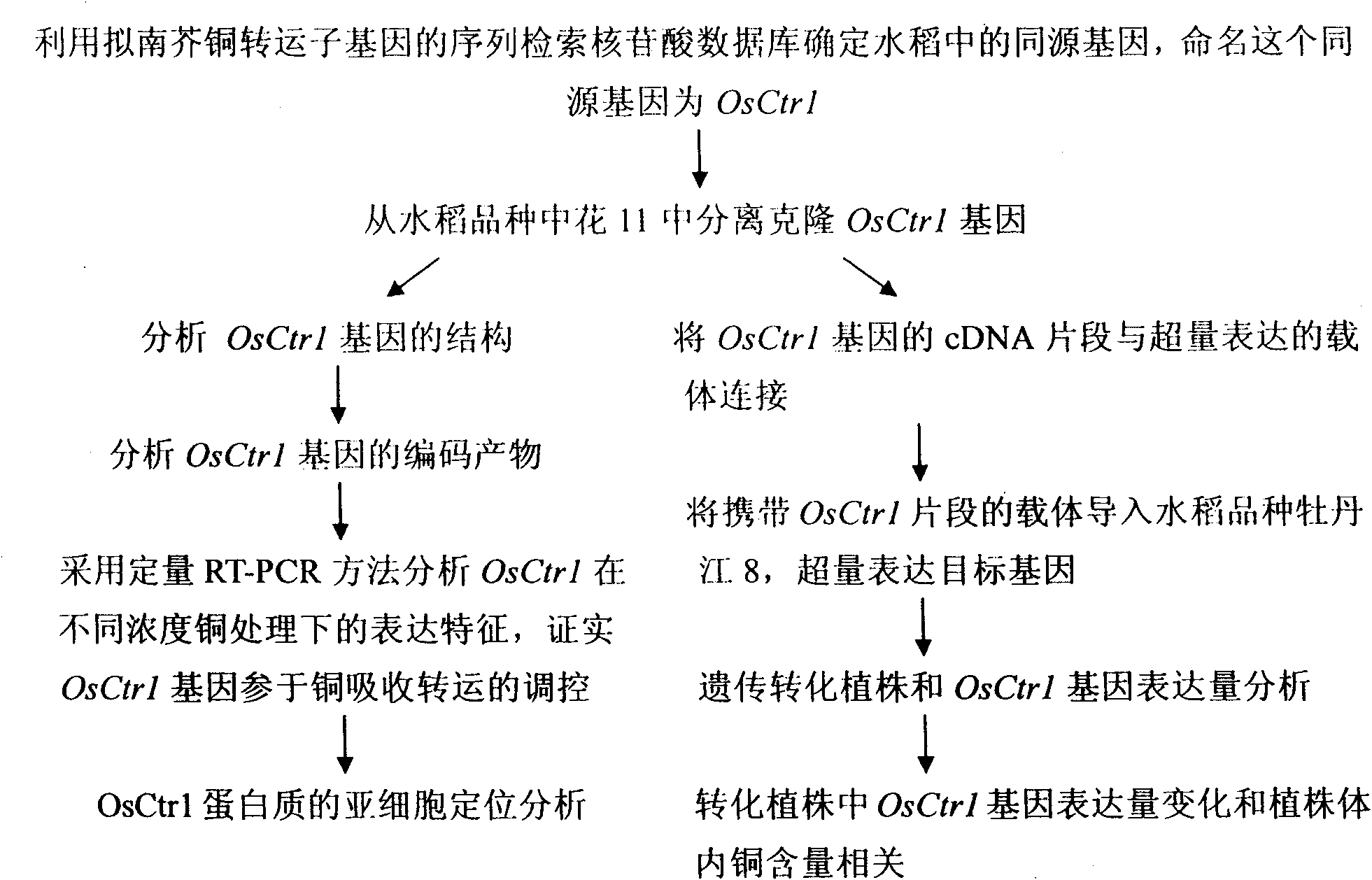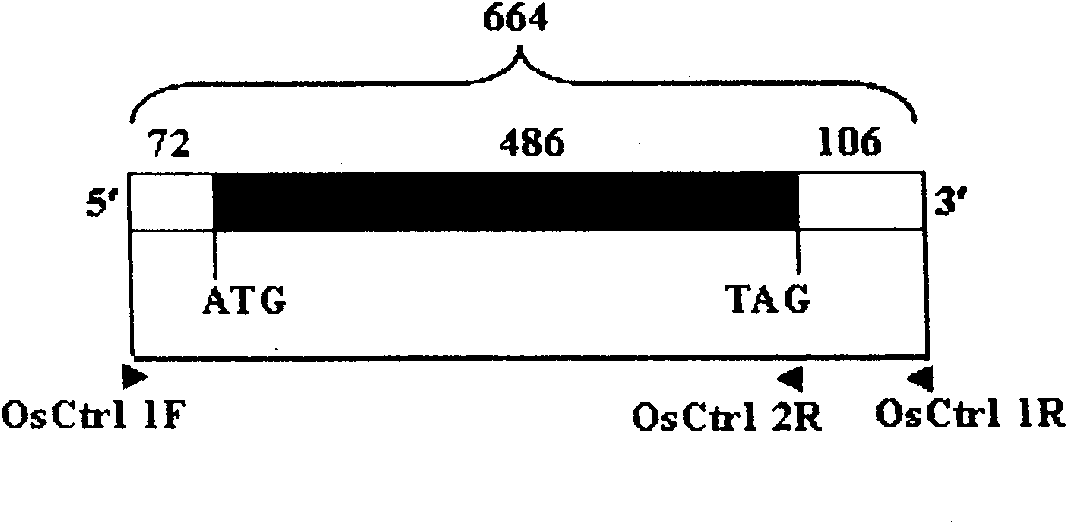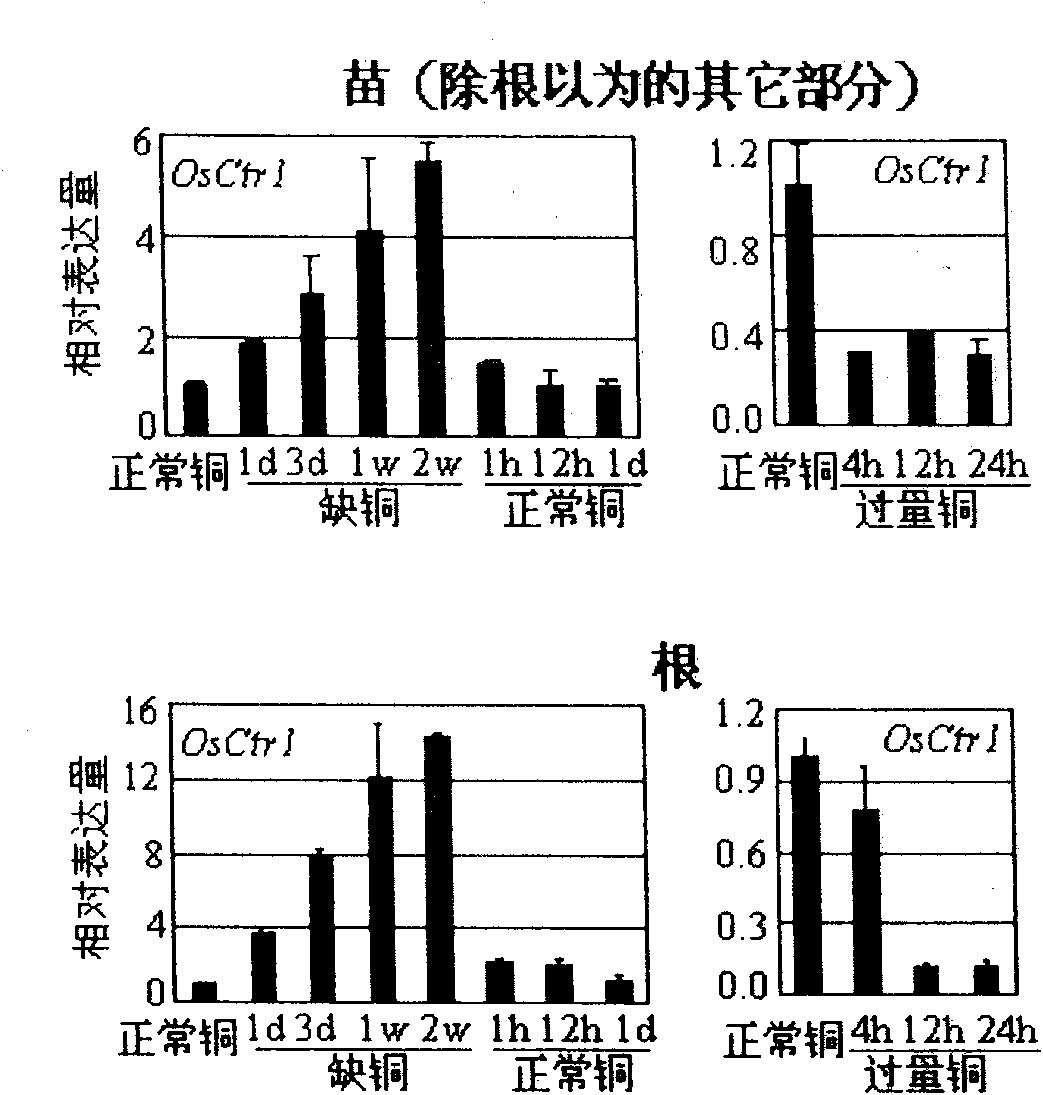Oryza sativa copper transporter gene OsCtr1 and application thereof in remediation of copper contaminated soil and water body
A gene and rice technology, which is applied in the field of isolation, cloning, functional verification and application of the rice copper transporter gene OsCtr1, can solve the problems such as the inability to meet the needs of copper pollution control.
- Summary
- Abstract
- Description
- Claims
- Application Information
AI Technical Summary
Problems solved by technology
Method used
Image
Examples
Embodiment 1
[0021] Example 1: Sequence and structural analysis of the OsCtr1 gene
[0022] 1. Prediction of OsCtr1 gene structure
[0023] The applicant of the present invention uses a section of cDNA sequence (Kampfenkel et al., 1995) of the copper transporter gene AtCOPT1 of Arabidopsis thaliana, uses BLAST method (Altschul etc., 1997) to search nucleotide database GenBank (http: / / www.ncbi. nlm.nih.gov), found that the cDNA sequence was highly homologous to a section (positions 104141 to 104626) of a 166421bp long sequence (GenBank accession number: AP003106.1) located on rice chromosome 1 from the rice variety Nipponbare. In the rice genome database TIGR (http: / / rice.plantbiology.msu.edu / ), this rice sequence homologous to the AtCOPT1 gene is annotated as a gene, and its number is LOC_Os01g56420. The applicant of the present invention named this gene OsCtr1 (Oryza sativa copper transporter 1).
[0024] 2. Isolation and cloning of OsCtr1 gene from rice variety Zhonghua 11
[0025]Zho...
Embodiment 2
[0031] Example 2: Expression profile analysis of OsCtr1 gene after copper treatment
[0032] In order to verify whether the OsCtr1 gene is involved in the regulation of copper uptake and transport in rice, the applicant of the present invention firstly adopted quantitative reverse transcription-PCR (quantitative reverse transcription-PCR, qRT-PCR) technology (Qiu et al., 2007) to analyze the OsCtr1 gene's effect on copper. Treatment response. The applicant of the present invention used hydroponics to grow rice (Ishimaru et al., 2006). The hydroponic culture medium adopts the standard formula (Ishimaru et al., 2006). The content of copper salt (copper sulfate) in the standard hydroponic culture solution is 0.2 μM. In the copper deficiency stress treatment experiment, no copper salt was added to the culture medium; in the copper excess stress treatment experiment, the copper salt content in the culture medium was 50 μM. The rice variety Zhonghua 11 was hydrocultured to the 4-...
Embodiment 3
[0035] Example 3: Analysis of subcellular localization of OsCtr1 gene-encoded product
[0036] 1. Construction of genetic transformation vector
[0037] The genetic transformation vector mediated by Agrobacterium used in the present invention is pU1391 ( Figure 4 ). pU1391 is a commonly used rice genetic transformation vector (Cai et al., 2008). It carries the maize ubiquitin gene promoter (P Ubi ) and green fluorescence protein (GFP) tags.
[0038] Using the full-length OsCtr1 gene clone as a template, PCR technology was used to amplify the coding segment DNA of the OsCtr1 gene. PCR primers are OsCtr11F (see Example 1) and OsCtr12R (5'-CGG GGATCC CAGCAGGCCGGGTCG-3') (the underline represents the BamHI restriction endonuclease digestion site) ( figure 2 ). The PCR product is connected with the T-A cloning carrier pGEM-T (Promega Company of the United States), and the connected carrier is electrotransformed (the electrotransformer is a product of eppendorf Company, an...
PUM
 Login to View More
Login to View More Abstract
Description
Claims
Application Information
 Login to View More
Login to View More - R&D
- Intellectual Property
- Life Sciences
- Materials
- Tech Scout
- Unparalleled Data Quality
- Higher Quality Content
- 60% Fewer Hallucinations
Browse by: Latest US Patents, China's latest patents, Technical Efficacy Thesaurus, Application Domain, Technology Topic, Popular Technical Reports.
© 2025 PatSnap. All rights reserved.Legal|Privacy policy|Modern Slavery Act Transparency Statement|Sitemap|About US| Contact US: help@patsnap.com



